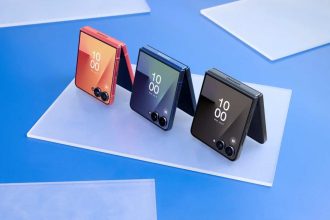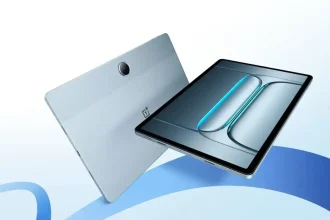In the competitive landscape of clean Android devices, the Nothing Phone (3) emerges as a noteworthy contender against Google’s Pixel 9 Pro XL, at least until the anticipated Pixel 10 series debuts in the upcoming months. One of the major advantages for the Pixel 10 is that it is expected to closely resemble the Pixel 9 in terms of design and functionality, primarily featuring an upgraded chipset and subtle refinements to its camera bar, making this comparison more equitable.
The Nothing Phone (3) draws attention for its distinctive design that breaks away from conventional smartphone aesthetics. Its transparent finish and the unconventional arrangement of the cameras stand out dramatically among competitors. While some may appreciate this bold approach, others may find it polarizing, igniting conversations that serve as a form of free promotion.
In contrast, the Pixel 9 Pro XL’s design is reminiscent of the iPhone but incorporates a unique camera bar. While visually appealing, it somewhat lacks originality, merging into the background rather than making a striking statement.
A notable feature of the Nothing Phone (3) is its “Glyph Matrix” area, which can become warm during intensive use, such as app downloads or initial set-up. Additionally, the innovative capacitive touch button’s integration into the design necessitates a cut-out in phone cases, which may be inconvenient. Despite the brand’s efforts to showcase its utility, it often feels more like a novelty, potentially overshadowed by previous offerings like the LED Glyph lights.
Utilizing high-quality materials, Nothing achieves impressive fit and finish; however, its display quality can’t compete with the Pixel 9 Pro’s LTPO OLED, which boasts a larger 6.8-inch screen compared to the Phone (3)’s 6.67-inch panel. Though the visual difference might not be evident immediately, the Pixel’s Gorilla Glass 7 offers superior durability compared to the Phone (3).
When it comes to biometric capabilities, Google has opted for an ultrasonic scanner positioned lower down for easier access, while the Nothing Phone (3) features an optical scanner located at the phone’s bottom edge, which can be awkward when handling the larger device. While the Pixel’s unlocking is more reliable, both devices offer comparable speeds.
On the software front, the Google Pixel series is renowned for its prompt and frequent updates, setting the benchmark within the Android ecosystem. The Nothing Phone (3) runs on Nothing OS, which, despite being based on Android 15, lags behind the latest public OS compared to the cutting-edge Pixel 9 Pro. The forthcoming Nothing OS 4.0 will incorporate more enhancements but lacks a definitive release date.
While Nothing OS brings in visual customizations and elements seen on Pixel phones, the exclusive features on Pixel devices enhance user experience through tools like Pixel Studio and Pixel Weather. In contrast, the Phone (3) introduces an innovative “Essential Space” that integrates with the Essential Key to capture screens or relay images directly from the camera, introducing a new layer of functionality.
Under the hood, the Snapdragon 8s Gen 4 processor of the Nothing Phone (3) is robust and outperforms the Tensor G4 in efficiency, despite its slightly higher power consumption. This combination, alongside superior onboard storage, lends a responsive feel to the Phone (3), which has shown marginally quicker load times compared to the Pixel 9 Pro.
In terms of battery performance, the Nothing Phone (3) boasts significant advantages with its 5,150mAh silicon-carbon battery and 65W charging capabilities, compared to the Pixel’s resources. While the Pixel does offer faster wireless charging at 23W and 12W for reverse charging, the Phone (3) excels in overall battery life due to its advanced battery technology.
When it comes to cameras, both devices showcase impressive specifications. The Nothing Phone (3) features 50MP sensors front and back, while the Pixel 9 Pro XL has a triple-camera setup that includes a 50MP main, a 48MP ultrawide, and a 50MP telephoto. The results reveal a marked difference in image quality: while the Nothing Phone captures decent photos, it struggles with color vibrancy compared to the more natural renderings of the Pixel. Additionally, the Pixel offers superior zoom capabilities and video quality, glaringly outclassing its rival.
Ultimately, the Nothing Phone (3) appeals directly to fans of the Pixel and vintage OnePlus devices, representing an admirable effort from a young brand. While it may not fully embody the essence of a flagship device and might feel slightly overpriced by about $100, it offers a compelling alternative to the Pixel 9 Pro without losing its identity. It stands as an impressive option for those seeking a unique smartphone experience.Android








